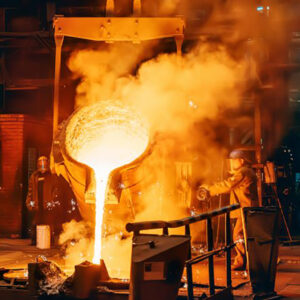China’s National Development and Reform Commission (NDRC) released its latest survey results on key steel wholesale markets nationwide including South China, and the Shanghai and Tianjin Municipalities which indicated subdued expectations for the steel market this month.
The survey, which measures expectations against six key indices, found that the Sales Price Expectation Index and Purchase Price Expectation Index for the wholesale market stood at 37.3% and 44.4% for July, respectively, representing large declines of 24.1 and 16.7 percentage points from the previous month, both falling below the 50% threshold. This consensus among market participants suggests a general anticipation of weaker steel prices this month, NDRC reported.
Regarding demand, expectations point to a slight decrease in steel demand in July with modest inventory growth. The Sales Volume Expectation Index and Inventory Expectation Index for July hovered around the 50% mark, standing at 48.1% and 57.6%, respectively, down 2.4 percentage points and up 5.2 percentage points from the previous month.
NDRC warned of potential “summertime blues” affecting downstream demand in July, particularly as frequent tropical storms in South China will hinder construction activity.
Furthermore, NDRC noted that policies announced earlier favoring the real estate market are losing momentum and are failing to significantly boost market demand during the summer off-season for steel use.
Despite subdued demand, domestic steelmakers are showing reluctance to reduce production in the short term while their production costs are lower, especially for coke, which saw consecutive declines in price in June bringing levels now approaching those seen last year, according to NDRC’s report.
The Sales Cost Expectation Index and Sales Profit Margin Expectation Index for July were 47.2% and 46.2%, respectively, indicating a decrease of 12.3 percentage points in cost expectations and a slight increase of 0.5 percentage points in profit margin expectations from the previous month. This suggests that despite lower anticipated costs, profit margins for selling steel are unlikely to gain momentum due to weak demand.




